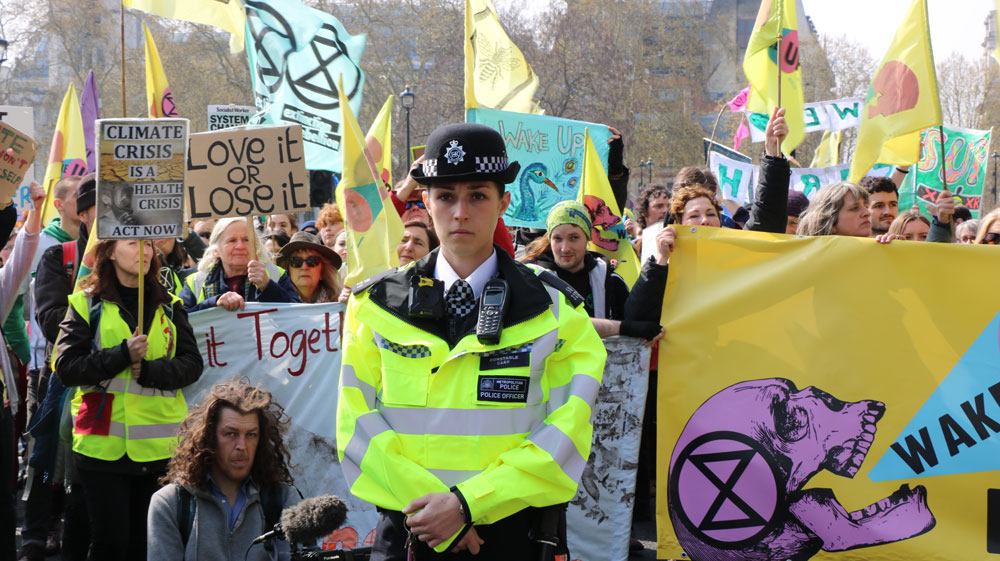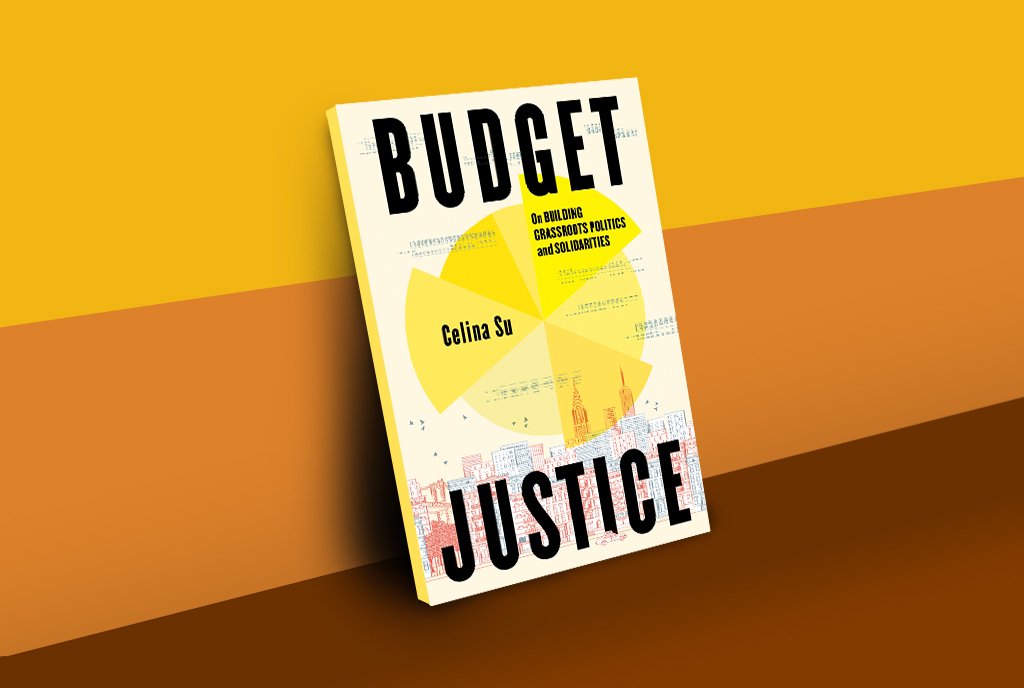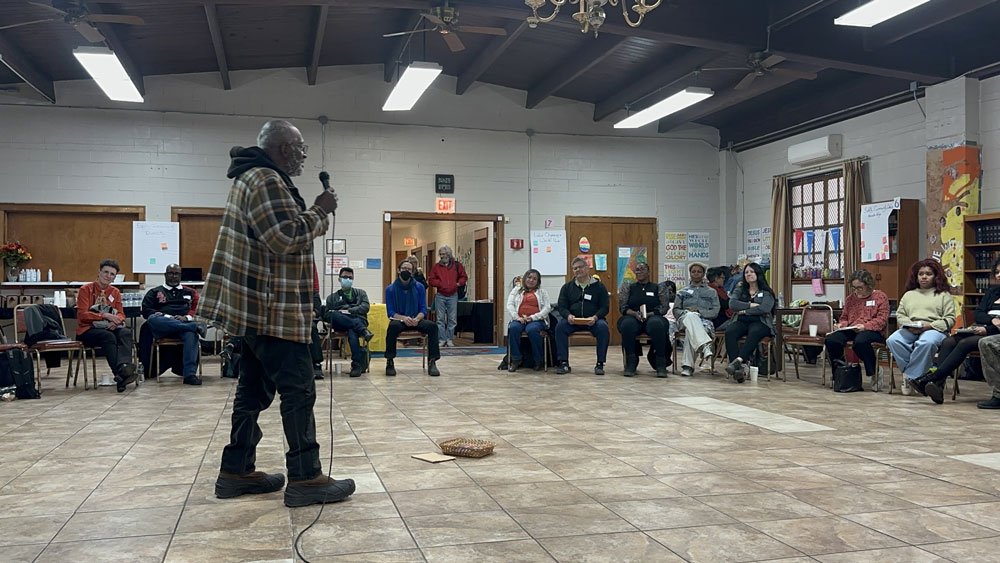
October 12, 2019; Reuters
More than 1,000 scientists—as of press time, the count was 1,469—specifically citing “the continued governmental inaction over the climate and ecological crisis,” have signed a joint declaration to support Extinction Rebellion, a one-year-old civil disobedience campaign that originated in Great Britain and has now spread globally.
The scientists, many among them leaders in the study of climate science and the loss of wildlife, hail mostly from England, but also come from the United States, Australia, Spain, France, and the rest of continental Europe. What sets them apart is their resolve to spur society to action and their willingness to step out of their prescribed professional roles of contributing research and knowledge to society. In 2017, in the lead-up to the first March for Science, NPQ covered a study showing that, despite common assumptions, advocacy does not damage scientists’ public credibility, and in fact can be seen as a critical responsibility.
Climate activist group Extinction Rebellion has effectively used civil disobedience to raise the profile of climate activism. The campaign holds that we live “in a period of abrupt climate breakdown” and put forth three demands: 1) declare a climate and ecological emergency; 2) halt biodiversity loss and reduce greenhouse gas emissions to net zero by 2025; and that 3) government create and be led by a Citizens’ Assembly on climate and ecological justice.
The work of Extinction Rebellion, of course, is part of a broader rising tide of climate activism. A little over a year ago, a young girl started protesting for climate action in her home country of Sweden. Now that teenage girl is a Nobel-nominated icon, inspiring millions of young citizens to protest and demand action on the climate crisis from their governments and institutions.
How did Greta Thunberg help spur a global student walkout joined by millions? By starting with a bit of civil disobedience. Most young people are told to stay in school and let adults “handle it.” Thunberg decided that wouldn’t do. Curious Earth summed it up perfectly.
What started out as one person standing up and saying no, quickly gained much media coverage. Every Friday, Greta Thunberg protests for climate action, alongside her battered sign. Now joined by millions of other young climate activists across the planet.
Since then, climate action has gained momentum, with multiple groups using that energy to wake the world up to the dangers of the climate crisis. NPQ has been keeping up with quickly globalizing movement of climate action. Over a year ago, Steve Dubb wrote about climate denial even as facts continued to pile up demonstrating the extent of the world’s climate emergency.
On the urgent action end of the spectrum, NPQ recently wrote about the Climate Emergency Fund, which raised more than $1 million to fund organizations and activists working to move governments to action. A list of “Top 50 Nonprofit Organizations Working to Stop Climate Change” includes organizations working on climate change action, among them 350.org, iMatter, and the Union of Concerned Scientists. In contrast, “Big Green,” or more established nonprofits, such as the Environmental Defense Fund, the Natural Resources Defense Council, and the Sierra Club get categorized under “Wildlife/Ecosystem Conversation.” Their websites feature campaigns for clean air and water and clean energy and tout how long they have been in existence or the year of founding on their website, not urgent action on the climate crisis.
Sign up for our free newsletters
Subscribe to NPQ's newsletters to have our top stories delivered directly to your inbox.
By signing up, you agree to our privacy policy and terms of use, and to receive messages from NPQ and our partners.
In September, Ruth McCambridge described the young crowds crying for urgency during the protests leading up to the UN Climate Action Summit. The crowds were unique not just in age, but also diversity, as the visible climate action movement has become less marked by “white environmentalists” After the protests, Thunberg appeared before Congress to, as Marian Conway reported, tell elected officials to “listen to scientists, not me.”
Reverend Mariama White-Hammond, in a recent Tiny Spark episode, noted, “I think a lot of scientists early on thought that if they just told people the facts, we would make the logical decision and move forward.” Unfortunately, it was not productive for scientists to repeat facts and evidence until they were blue in the face.
So, what do the scientists say now? Ecological economist Julia Steinberger told Reuters, “We can’t allow the role of scientists to be to just write papers and publish them in obscure journals and hope somehow that somebody out there will pay attention.”
This same mentality has propelled Extinction Rebellion from protests to arrests. In May of this year, NPQ’s Erin Rubin profiled the group’s founding and their more immediate success. The group believes “the only way to prevent our extinction is through mass participation civil disobedience.”
In the beginning, their protests attracted perhaps a few hundred people at each location. According to the Reuters article, since then, in a span of five months, the group has grown to attract thousands of protestors who have been arrested in civil disobedience actions in multiple cities around the world.
Extinction Rebellion draws momentum from the tension created from fighting hierarchal and traditional power balances in grassroots movements. Their “about us“ page explains how their lack of structure allows them to “empower anybody to act as part of XR [Extinction Rebellion].” They also claim they are “breaking down hierarchies of power for more equitable participation.”
This equitable piece is important, especially as climate change is linked to disparities for minority groups and people of color. Rev. White-Hammond, speaking on some of those disparities, says, “The only way we’re going to shift is if we are called to fight more deeply for the things that we love. And if we don’t love each other across race, across class, then we will sacrifice each other.”
This endorsement of civil disobedience might be one more call to do just that.—Sarah Miller and Kori Kanayama











